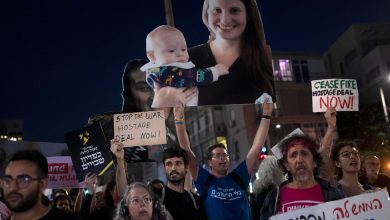Is A.I. the Future of Test Prep?

This article is part of Upstart, a series about companies harnessing new science and technology to solve challenges in their industries.
Since Socrates taught Plato and Plato taught Aristotle, humanity has known that the best education is delivered one-to-one by an experienced educator. But that is expensive, labor-intensive and difficult to scale. The result is the imperfect classroom-based instruction that we live with today: large class sizes, overworked and overloaded teachers, a deficiency of resources. Educators focus what little time they have for personal attention either on the best and the brightest or on the bottom of the class. The broad middle is often left to fend for itself.
Educators may have a new tool, A.I., to address those issues. Innovative forms of the technology, based on computer code that mimics the networks of neurons in the human brain, can uncover patterns in how students perform and can help teachers adjust their strategies accordingly. “A.I. tutors” — software systems that students interact with online — promise to give every student individualized attention, potentially remaking education as we know it.
Among the handful of companies leading that transformation is Riiid (pronounced “rid”), a start-up founded in Korea by YJ Jang, a graduate of Haas School of Business at the University of California, Berkeley. Riiid already has a strong presence in the Asian test-prep app market for the Test of English for International Communication, or TOEIC, which measures English-language proficiency for business. Now, Riiid is about to enter the SAT and ACT prep market in the United States.
“Education is a complex field deeply related to cognition, motivation, peer interaction, etc.,” Mr. Jang wrote in an email. “We draw insights from learning science, cognitive biology, data science, and other related areas of research for an iterative experimentation process that is challenging and time consuming — that’s why there are only a few players in the market.”
The first computer tutoring systems appeared in the 1960s, presenting material in short segments, asking students questions and providing immediate feedback on answers. Because these systems were expensive and computers were far from ubiquitous, research institutes were the main beneficiaries.
By the 1970s and ’80s, systems began using rule-based artificial intelligence and cognitive theory. These approaches led students through each step of a problem, giving hints from expert knowledge bases. But rule-based systems failed because they were not scalable — and programming extensive domain expertise was expensive and tedious.
Mr. Jang was evaluating such systems at Berkeley when a friend, Kangwook Lee, now a professor at the University of Wisconsin-Madison, introduced him to deep learning, a much more powerful form of A.I. in which algorithms learn on their own, drawing from mountains of data. Mr. Jang saw that deep learning could apply to teaching, with systems that learn content and student behavior over time.
He returned to Korea and founded Riiid in 2014, working with a team of data scientists to develop a set of A.I. algorithms that track student performance, predict scores and anticipate when students lose interest and are about to drop out. The company has published papers on this work at some of the world’s leading machine-learning conferences.
The Rise of OpenAI
The San Francisco company is one of the world’s most ambitious artificial intelligence labs. Here’s a look at some recent developments.
- ChatGPT: The new cutting-edge chatbot is inspiring awe, fear, stunts and attempts to circumvent its guardrails, our technology columnist writes.
- DALL-E 2: The system lets you create digital images simply by describing what you want to see. But for some, image generators are worrisome.
- GPT-3: With mind-boggling fluency, the natural-language system can write, argue and code. The implications for the future could be profound.
To validate its technology and collect the data necessary to refine its algorithms, Riiid launched a TOEIC test-prep app called Santa (Santa Claus, of course, collects data on children all over the world). It quickly became one of the best-selling education apps in Japan and Korea.
Through the app, Riiid accumulated data on student interactions, building what today is the one of the world’s largest public education data sets, called EdNet. But Riiid has struggled to collect enough data to generalize its A.I. system for the broader field of education.
“It’s hard to gather A.I.-trainable, multimodal data in diverse learning environments,” Mr. Jang wrote.
For now, the company is focused on the $300 billion test prep market, where data is easier to gather, and has partnered with education companies in various parts of the world to develop test prep apps. Earlier this year, Riiid worked with Casa Grande to launch an app called OE Saber, which helps students in Colombia prepare for the country’s Saber 11 college entrance exam.
Riiid’s success attracted a $175 million investment from the venture capital giant SoftBank’s Vision Fund II, bringing the company’s funding to about $250 million.
Now Riiid is introducing an A.I.-powered prep platform for the SAT and ACT college entrance exams. The product, R.test, which will be released in January (pricing has yet to be announced), predicts standardized exam scores in a quarter of the time it takes to complete a full mock test. By answering 30 questions, students get an analysis of their weaknesses and guidance on how to improve, including an A.I.-curated selection of relevant practice questions. Riiid says the intention is for students to drill with the app and take the real exam with some confidence of what their final scores will be.
“I really liked this because we can just use it at home instead of hiring a tutor,” said Esther Yi, a parent in Georgia who has tried an early version of the platform. She found the R.test analysis particularly powerful. “My 10th grader will definitely benefit from this,” she said.
Oscar Torres, a high school math teacher in Chicago who has tried Riiid’s system, said he liked R.test because it assesses student knowledge in real time without depending on past test scores. “As A.I. develops, I see it becoming a better and stronger resource for us,” he said. “We have to troubleshoot real time as teachers, and A.I. can help us tremendously.”
But the company’s goal remains broader than test prep. Mr. Jang said R.test is part of an effort to collect data and prove its algorithms’ efficacy in other domains. Riiid researchers continue to develop novel architectures and higher-performing A.I. models that can track student behavior, trace student knowledge and select the best content to study at any given time.
“Our algorithms can predict with startling accuracy student test scores, a moving number that serves as a sort of carrot,” he said. “The more students follow the algorithmic recommendations, the higher their predicted score will climb.”
Mr. Jang believes that soon teaching will no longer be based on guesswork or intuition, but on data. And that may be the company’s biggest challenge: Gathering that data, he added, is the bottleneck because privacy concerns make data collection in schools a complicated issue. (Riiid says that its apps do not collect any personally identifiable information from users.)
To address those concerns, Riiid has helped establish the EdSAFE AI Alliance, a global, cross-sector alliance of companies, nonprofit organizations and education technology associations to develop benchmarks and standards to ensure the safe and responsible use of A.I. in education.
“The dream,” Mr. Jang said, “is to integrate these algorithms into a comprehensive system that can teach any subject to anyone, anywhere.”




